
For centuries, bridges have represented human ingenuity by promoting trade, bringing communities together, and bridging geographical divides. The globe will have witnessed a number of enormous structures that represent the height of engineering by 2024. These architectural marvels are so magnificent that they draw attention from all across the world even at long distances.
Every bridge is an evidence of human ingenuity at work, from the USA’s Lake Pontchartrain Causeway, which is 38.35 kilometers long, to China’s Danyang-Kunshan Grand Bridge, which is the longest bridge in the world at 164.8 kilometers. These structures are not only helpful for transportation but also function as well-known symbols of humanity’s ability to overcome adversity and forge global connections. Here are 8 massive bridges, culminating in the largest bridge in the world.
8. Metro Manila Skyway System: 39 km – (128,600 ft)

The Metro Manila Skyway System, a network of elevated highways in the Philippines, is proof of the country’s efforts to improve the nation’s transportation infrastructure in the congested capital region and lessen traffic. The extensive network of elevated roadways in Metro Manila provides commuters with a more efficient and rapid means of navigating the metropolitan landscape.
Some of the linking sections that make up the Skyway System are the Skyway Stage 3, the North Luzon Expressway Skyway, and the South Luzon Expressway Skyway. These elevated expressways run through crowded thoroughfares and urban areas, smoothly connecting drivers between different parts of Metro Manila and neighboring provinces.
Construction on the Metro Manila Skyway System began in the late 20th and early 21st centuries, and ongoing projects are underway to improve connectivity and reduce travel times. Modern infrastructure and state-of-the-art engineering techniques are used by the system to withstand the region’s dense population, frequent traffic bottlenecks, and occasional extreme weather events.
A vital transportation route, the Skyway System improves movement throughout Metro Manila and lessens gridlock on surface streets. It reduces travel times and fuel consumption, enhances productivity, and improves the quality of life for both residents and businesses by enabling commuters to avoid traffic bottlenecks. While not the largest bridge in the world, the Metro Manila Skyway System symbolizes the aspirations of the Philippines for development and progress. Its building required a great deal of collaboration, creativity, and funding, indicating the country’s commitment to fostering economic expansion and infrastructure upgrading.
7. Beijing Grand Bridge: 48 km – (157,982 ft)
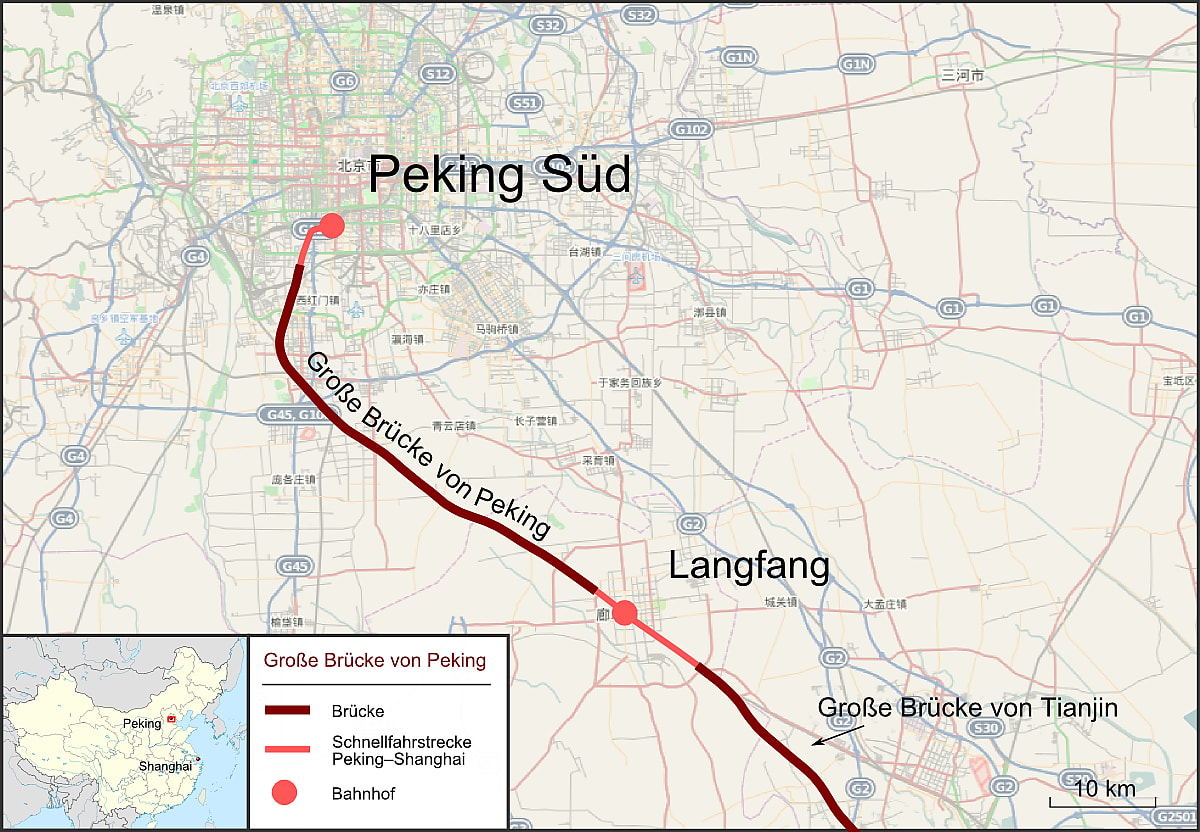
China’s extensive high-speed rail network is greatly aided by the spectacular Beijing Grand Bridge. Covering the vast plains that divide Beijing from Langfang, it is thought to be the sixth longest bridge in the world, with a total length of around 48.153 kilometers (29.9 miles).
While not the largest bridge in the world, Beijing Grand Bridge construction began in 2006 as part of the Beijing-Tianjin Intercity Railway project, which aimed to improve traffic between the two major metropolitan centers. The bridge, which was finished in 2010, is a prime example of China’s commitment to technological innovation and infrastructural development.
The Beijing Grand Bridge is constructed with a mix of viaducts, spans, and supports to withstand the region’s varying topography and weather. By harmoniously fitting in with the surrounding surroundings, its streamlined and clean form produces a visually appealing landmark along the railway path.
The Beijing Grand Bridge is a crucial component of the high-speed rail network that makes it possible to travel quickly and easily between Beijing and Langfang by cutting travel times and enhancing connectivity in the region. It encourages economic growth and advancement, supporting the prosperity of both businesses and communities despite not being the largest bridge in the world.
Also Read: 8 Rare Purple Animals from Around the World
6. Bang Na Expressway: 54 km – (177,000 ft)
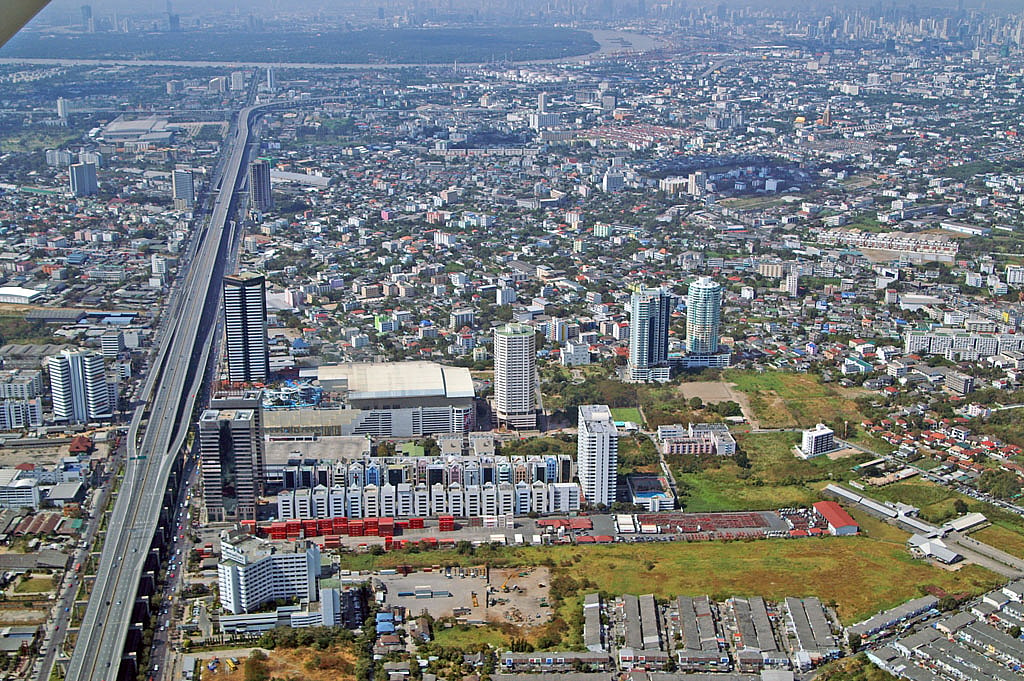
Bangkok’s well-known Bang Na Expressway serves as proof of the city’s advancement toward modernity and economic expansion. With a length of more than 54 kilometers (34 miles), it is among the longest elevated roads in the world.
The Bang Na Expressway, which took four years to build, was designed to reduce traffic in the crowded city and, while not the largest bridge in the world, is an undeniably impressive feat. The year 2000 saw its completion. Because of the multiple lanes and elevated sections of the highway, getting around the city and its surroundings is not too difficult.
The Bang Na Expressway is a vital transit corridor that connects Bangkok’s key business and residential neighborhoods. Since it facilitates the movement of goods and people, it is vital to the city’s booming economy and hectic urban life. Beyond its usefulness, the Bang Na Expressway is a symbol of Thailand’s commitment to contemporary infrastructure development.
Throughout the city’s development, creative technical solutions and meticulous planning were needed to navigate its complex urban terrain. Despite not being the largest bridge in the world, traveling along the Bang Na Expressway offers commuters broad views of Bangkok’s skyline as well as nearby districts. It provides a rapid and simple means of transportation, reducing travel time and relieving traffic on surface roadways.
5. Weinan Weihe Grand Bridge – 79 km – (261,588 ft)
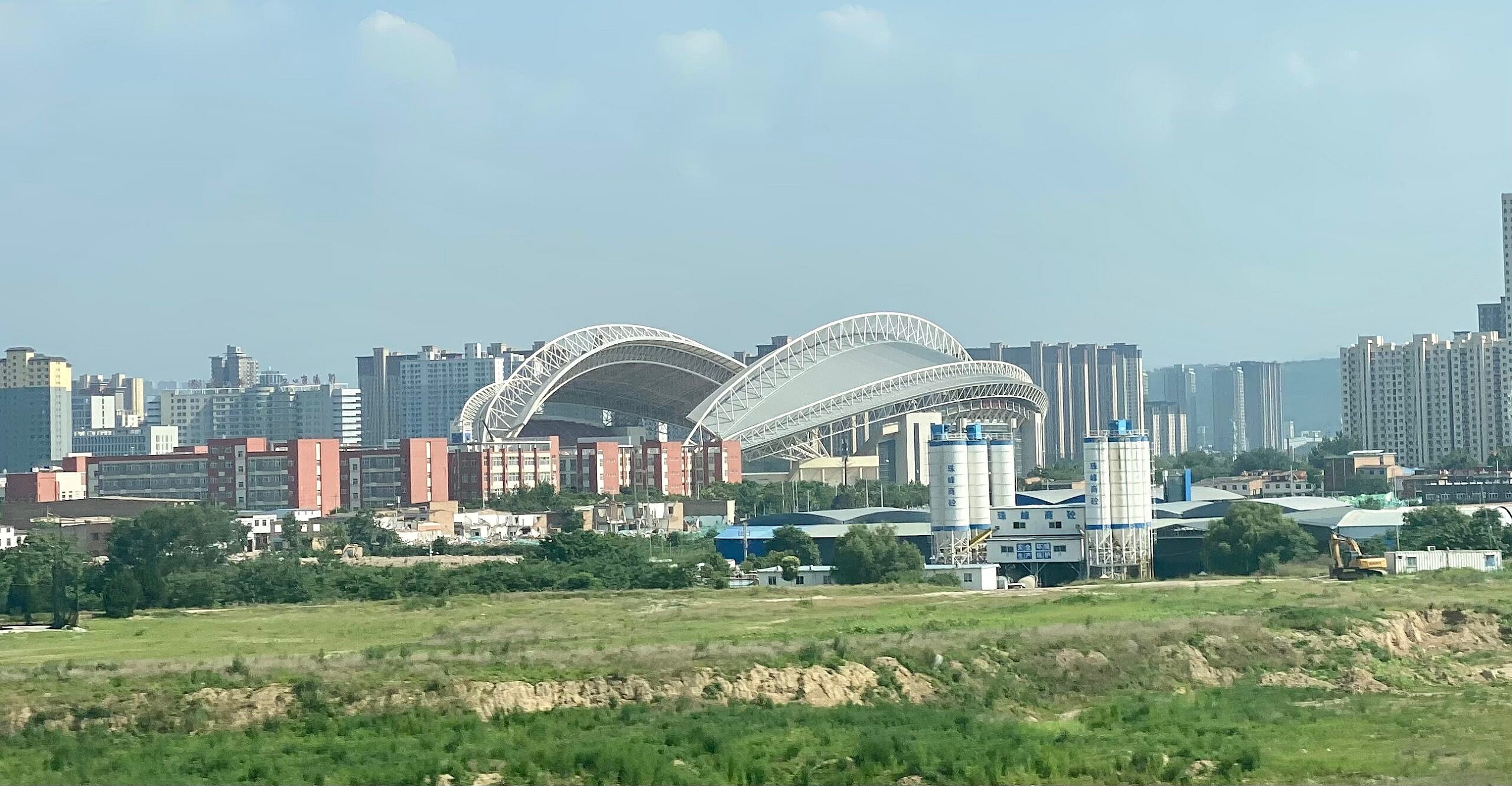
Situated in China’s Shaanxi province, the Weinan Weihe Grand Bridge spans the majestic Wei River and is a remarkable example of engineering. At 79.7 kilometers (49.5 miles) in length, it is one of the longest bridges in the world.
While not quite the largest bridge in the world, the Weinan Weihe Grand Bridge, constructed as an essential component of the Zhengzhou-Xi’an High-Speed Railway, creates a crucial link between two significant central Chinese cities. Its development, which lasted from 2005 to 2008, showed how quickly China was developing its infrastructure. The bridge features an incredible array of viaducts, spans, and supports that are designed to withstand the challenging local weather and geology.
Visitors are in for a stunning sight as its simple, graceful design perfectly melds with the surrounding unspoiled landscape. The Weinan Weihe Grand Bridge, a part of the high-speed rail network, facilitates better connections throughout the region by expediting and speeding up traffic between Zhengzhou and Xi’an. It stimulates economic growth and development, promoting the prosperity of both businesses and communities.
While not the largest bridge in the world, the Weinan Weihe Grand Bridge symbolizes China’s commitment to progress and innovation in addition to its practical usage. To finish its construction, thousands of workers used cutting-edge engineering techniques, long hours, and meticulous planning.
Read More: Most Valuable Glass Art Ever Made
4. Cangde Grand Bridge: 105 km – (347,379 ft)
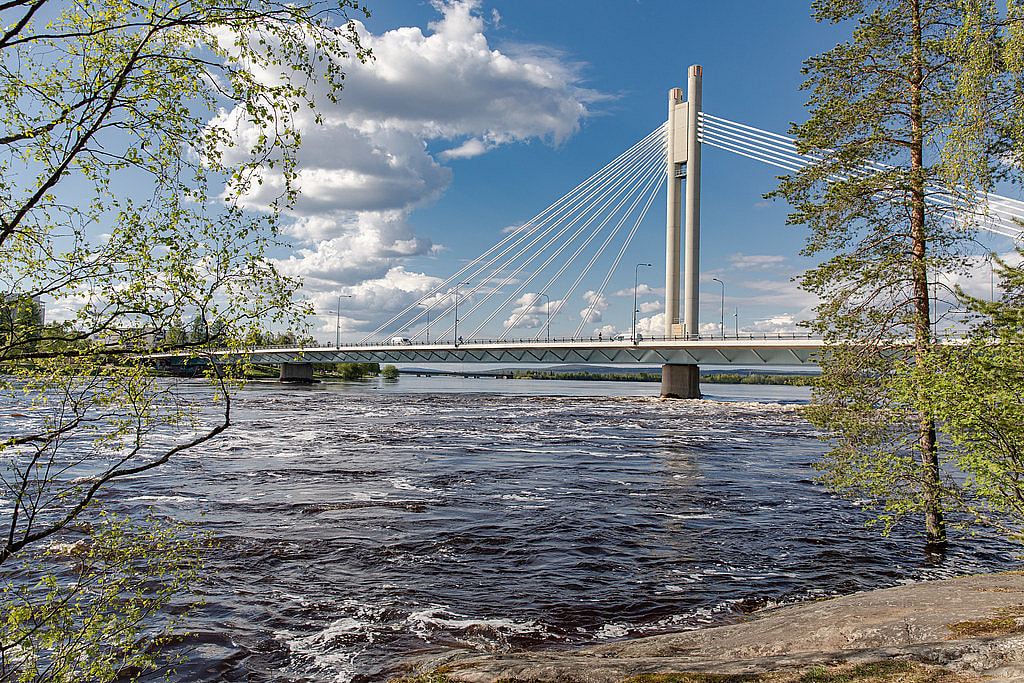
Situated in Hebei Province, the Cangde Grand Bridge spans the wide plains that separate Langfang and Qingxian. It is an amazing engineering achievement from China. Though not the largest bridge in the world, measuring an incredible 105.9 kilometers, it is an essential part of China’s high-speed rail network.
The Cangde Grand Bridge, which was built as part of the Beijing-Tianjin Intercity Railway project, was completed in 2008, indicating the nation’s rapid infrastructure development. Construction started in 2006. The bridge features a variety of viaducts, spans, and supports and crosses rivers, valleys, and metropolitan areas using state-of-the-art engineering techniques.
An integral component of the high-speed rail network, the Cangde Grand Bridge enhances connectivity and boosts the economy by facilitating efficient transportation between major cities. Its incorporation into the Beijing-Tianjin Intercity Railway has significantly reduced travel times between the two cities, benefiting commuters, businesses, and tourists alike.
Beyond its usefulness, the Cangde Grand Bridge symbolizes China’s commitment to technological advancement and innovation despite not being the largest bridge in the world. The meticulous planning, exact engineering, and unparalleled teamwork that went into its construction serve as testaments to China’s leadership in the development of infrastructure.
3. Tianjin Grand Bridge: 113 km – (373,000 ft)
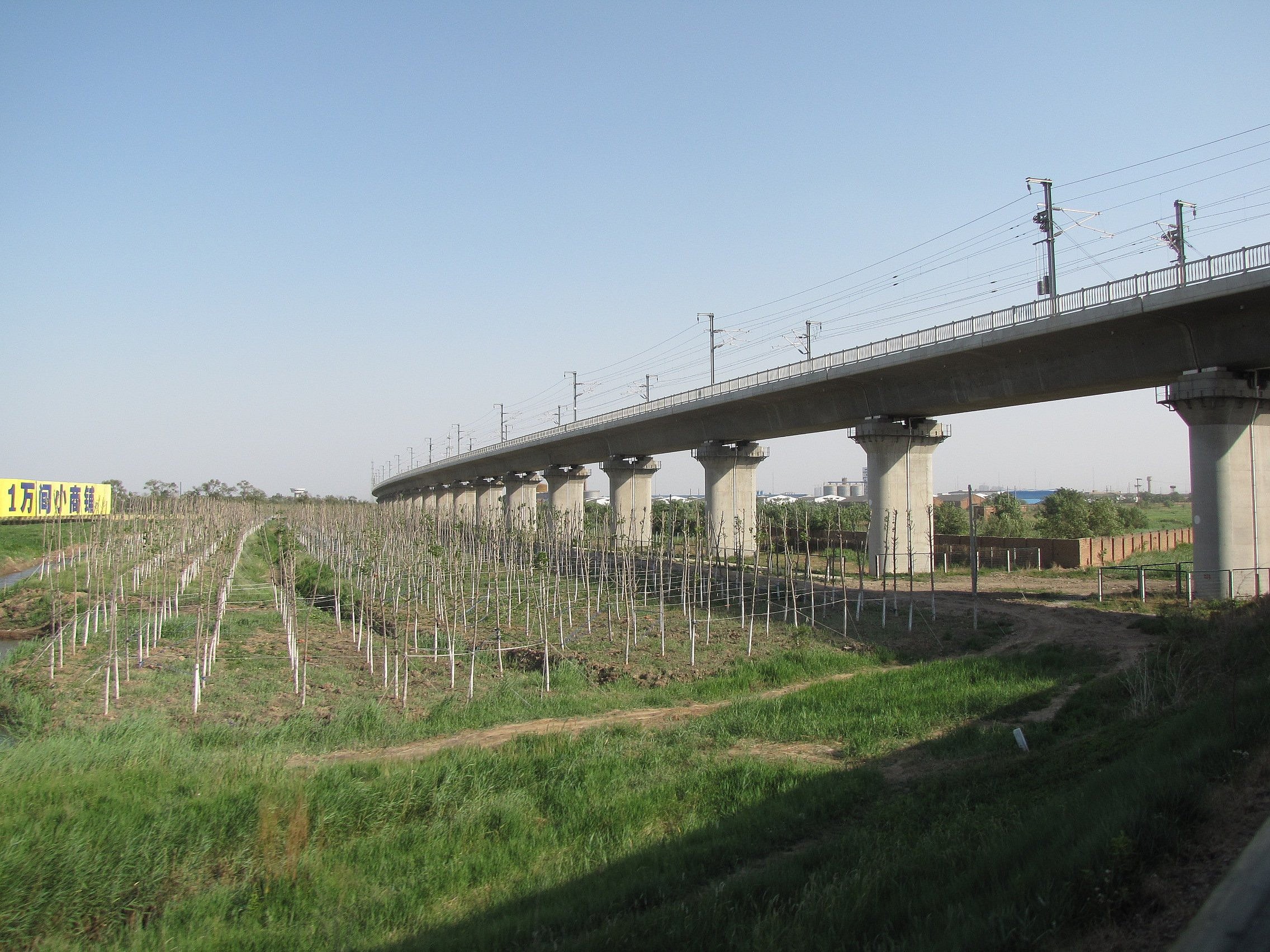
An engineering marvel that crosses the vast stretches of China, the Tianjin Grand Bridge is a tribute to human ingenuity and invention. Though not the largest bridge in the world, at 113.7 kilometers (70.6 miles) in length, it is the third-longest bridge in the world, connecting Beijing and Shanghai via the Beijing-Shanghai High-Speed Railway.
The completion of the Tianjin Grand Bridge in 2010 marked a significant advancement in China’s aspirations for infrastructure development, which had begun in 2006. By using advanced engineering techniques including viaducts, spans, and supports, the bridge crosses rivers, valleys, and urban areas with the least amount of environmental impact feasible.
The Tianjin Grand Bridge plays a major role in the efficient and rapid connection of two of the largest and wealthiest cities in China. Travelers may get from Beijing to Shanghai by high-speed train in a lot less time than they might using more conventional modes of transportation.
Apart from its functional purpose, the Tianjin Grand Bridge symbolizes China’s rapid modernization and ascent to prominence in the infrastructure construction industry, a beautiful structure despite not being the largest bridge in the world. Careful planning, coordination, and collaboration between government agencies, laborers, and engineers were necessary for its development.
Also Read: 7 Most Dangerous Roads in the United States
2. Changhua-Kaohsiung Viaduct – 157 km (516,132 ft)
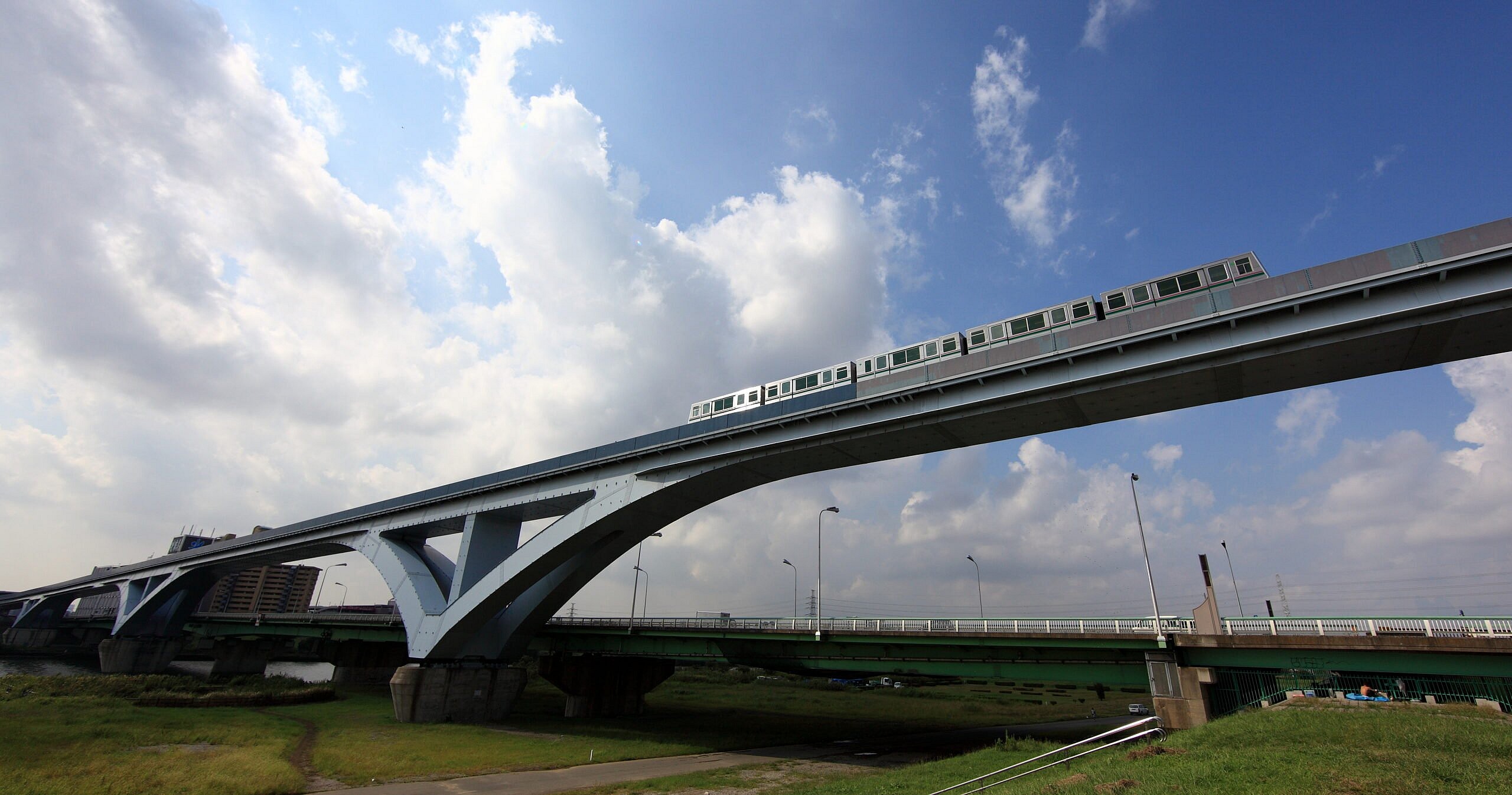
The Changhua-Kaohsiung Viaduct, commonly known as the Taiwan High-Speed Rail Viaduct, is a stunning technological feat that connects the towns of Changhua and Kaohsiung and crosses Taiwan’s beautiful landscapes. Though not the largest bridge in the world, at 157.3 kilometers (97.7 miles) long, this viaduct is one of the longest bridges in the world and is a vital component of Taiwan’s transportation system.
The completion of the viaduct’s construction in 2006 marked a significant turning point in Taiwan’s modernization efforts, which had begun in 1999. The viaduct is an essential part of Taiwan’s high-speed rail network, which enables efficient and rapid transit between the major cities on the island.
The sleek and elegant architecture of the Changhua-Kaohsiung Viaduct, which consists of numerous spans and supports that seamlessly blend with the surrounding landscape, sets it apart despite it not being the largest bridge in the world. The adoption of state-of-the-art engineering techniques to withstand seismic activity and other environmental issues ensures the viaduct’s endurance and durability. The viaduct not only fulfills a functional need but also symbolizes Taiwan’s commitment to innovation and excellent technological capabilities. It took the cooperation of engineers, architects, and laborers with exceptional skill and dedication to build this enormous project.
By encouraging more travel, trade, and mobility, the viaduct’s construction has completely transformed Taiwan’s social and economic landscape. The travel time between Changhua and Kaohsiung has decreased, strengthening commercial ties and enhancing linkages across the island.
1. Danyang-Kunshan Grand Bridge – 164 km (540,700 ft) – Largest Bridge in the World
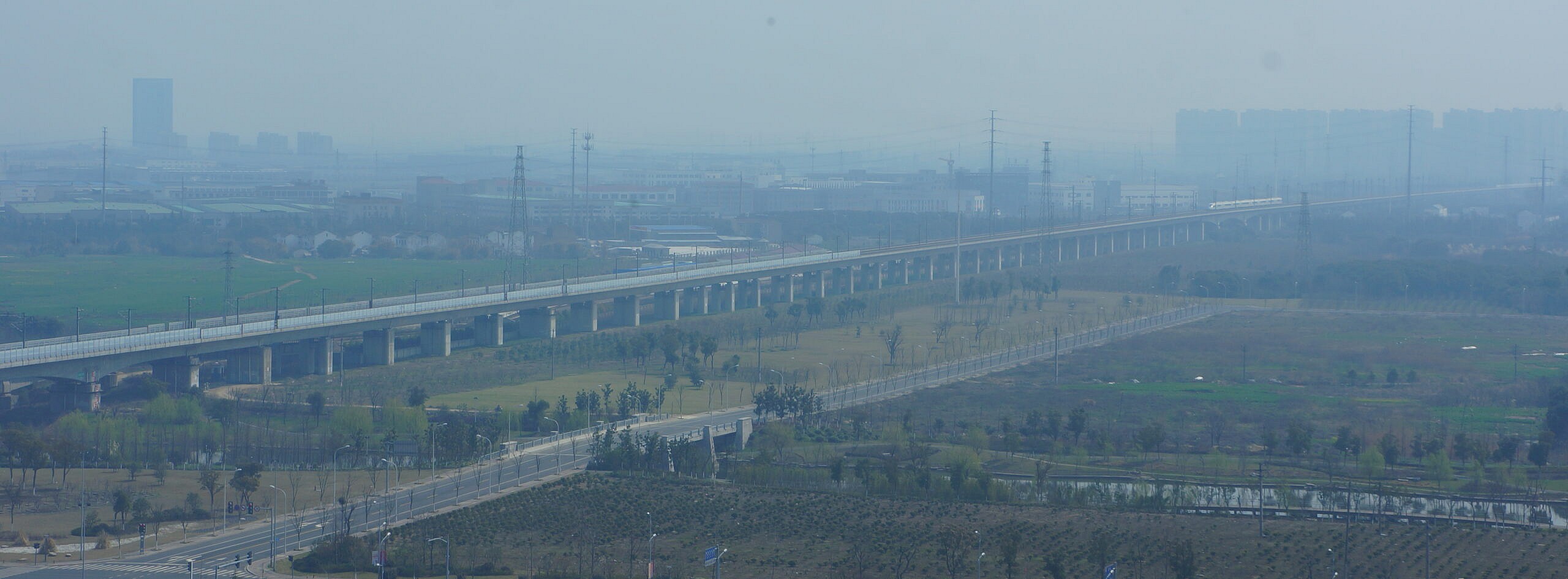
China’s largest bridge and the largest bridge in the world, the Danyang-Kunshan Grand Bridge, is a modern architectural marvel. At about 164.8 kilometers (102.4 miles), this massive structure is acknowledged as the longest and largest bridge in the world.
Constructed as part of the Beijing-Shanghai High-Speed Railway, the Danyang-Kunshan Grand Bridge connects the picturesque towns of Danyang, Jiangsu Province, and Kunshan, Jiangsu Province. It is an essential link in China’s extensive high-speed rail system. The bridge’s construction, which commenced in 2006 and was completed in 2010, is evidence of the remarkable breadth and effectiveness of China’s infrastructure development programs. The majority of it consists of spans and viaducts, some of which are supported by massive pillars and pylons.
The Danyang-Kunshan Grand Bridge is not only a fast way to travel between two sizable cities but also a marvel of human ingenuity and knowledge as the largest bridge in the world. Its enormous dimensions and opulent architecture show how modern engineering may achieve feats previously unthinkable in the field of bridge construction.
